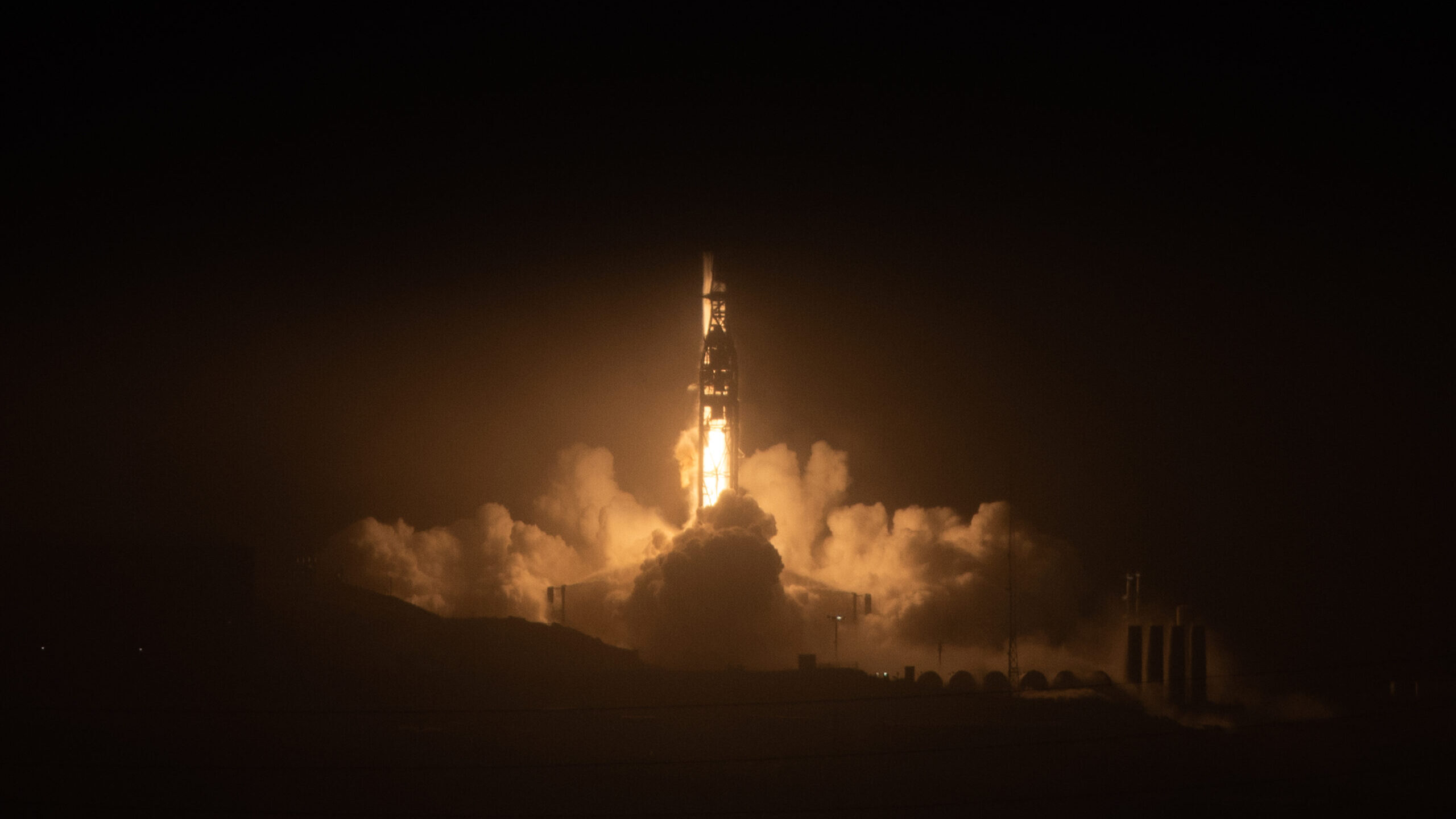
SpaceX Falcon 9 rocket launch from Vandenberg SFB in April 2022. (SpaceX)
WASHINGTON — The Pentagon’s long-awaited “Commercial Space Integration Strategy” opens the possibility that military force could be used to protect US commercial space operators, as well as suggests that the Defense Department will provide financial support to contractors providing space services.
The document, released today by outgoing Assistant Secretary of Defense for Space Policy John Plumb, is the first of its kind — although senior DoD and Intelligence Community officials for years have been touting their intent to take better advantage of cutting-edge commercial space technology. The strategy therefore breaks little new ground, but does put a formal stamp of approval on efforts that up to now have been essentially ad hoc and scattered across different services and organizations.
Further, the new Pentagon strategy has been coordinated with a separate Space Force commercial space strategy that is expected to focus a bit more tightly on acquisition when it is released, likely within the next couple of days. Plumb told reporters today the strategies will be “very much aligned.”
“Deeper integration of commercial space solutions represents a conceptual shift away from legacy practices in which the Department has relied on bespoke, DoD-specific capabilities and limited the use of commercial solutions,” the Pentagon strategy reads. “Given the expansion of the commercial space sector and the proliferation of space capabilities, the Department will benefit by making commercial solutions integral — and not just supplementary — to national security space architectures.”
Plumb stressed that the strategy is aimed beyond the usual defense industrial base to the broader commercial market, looking to leverage tech and capabilities not designed from inception for government use.
While acknowledging that there is some “inherent risk” in relying on commercial systems, involving trade-offs between speed and security, the strategy stresses there also is risk in failing to harness commercial “innovation and speed.”
As long argued by leaders of the Space Force and US Space Command and underlined by the war in Ukraine, more and better use of commercial contractors and the space supply chain further can contribute to the resiliency of the overarching US national security space architecture.
Thus the goal, according to the strategy, is to find the best “balance” between government and commercial capabilities.
The document lays out four “top-level priorities to maximize the benefits” of commercial solutions. “First, we will ensure access to commercial space solutions across the spectrum of conflict. Second, we will achieve integration prior to crisis. Third, we will establish security conditions that promote integration. Fourth, we will support the development of new commercial space solutions,” the strategy says.
DoD has identified 13 “mission areas for national security space” where commercial products, data and services could be utilized to a greater extent than currently. Those mission areas are identified as: “Combat Power Projection; Command and Control (C2); Cyberspace Operations; Electromagnetic Warfare (EW); Environmental Monitoring (EM); Intelligence, Surveillance, and Reconnaissance (ISR); Missile Warning (MW); Nuclear Detonation Detection (NUDET); Positioning, Navigation, and Timing (PNT); Space Access, Mobility, and Logistics (SAML); Satellite Communications (SATCOM); Space Domain Awareness (SDA); and Spacecraft Operations.”
That said, the strategy explains that the depth of reliance on commercial solutions will vary from mission to mission.
Thus, strategy lays out three general “categories” for organizing use of commercial capabilities by mission area:
- Government Primary Mission Areas, where “a preponderance of functions must be performed by the government, while a select few could be performed by the commercial sector.” These missions currently include: “combat power projection; C2 (to include NC3); EW; NUDET; MW; and PNT.”
- Hybrid Mission Areas, currently including: “cyberspace operations; SATCOM; spacecraft operations; ISR; SDA; and EM.”
- Commercial Primary Mission Areas, where “the preponderance of functions within these mission areas could be performed by the commercial sector, while a limited number of functions must be performed by the government.” At the moment, the only mission area included in this category is SAML, with the document noting that “emerging commercially developed mission areas, such as in-space servicing, assembly, and manufacturing (ISAM), may provide additional opportunities in the future to support the warfighter.”
‘Ensured Access’ Through Financial, Military Means
Perhaps of most interest to industry is the strategy’s section on how DoD intends to “ensure” its “access” to commercial capabilities, including “being able to surge commercial capacity to meet military requirements and capability needs across the spectrum of conflict.”
First and foremost, DoD intends to rely on contracts and other agreements to bind suppliers that will include “cyber, data, and supply chain security requirements.” In addition, the strategy says that if deemed necessary “contracts will enable prioritization of Department requirements and capability needs over other commercial clients in specific situations.”
The planned use of contractual clauses to give the government power to appropriate commercial space products, data and services mimics the somewhat controversial practice at the National Reconnaissance Office for obtaining private-sector remote sensing imagery — sometimes called “checkbook shutter control.”
To sweeten that bitter pill, the strategy says that DoD is considering a number of methodologies to provide financial incentives and assurances to commercial providers.
“Commercial entities employing solutions in support of military operations accept risk. Traditional commercial insurance, commercial war-risk insurance, U.S. Government-provided insurance, and indemnification as defined in statute are all possible financial protection tools to mitigate that risk,” the strategy explains.
“U.S. government provided insurance is statutorily available for the air and maritime domains but is not yet available for the space domain. The Department will evaluate gaps in protection from commercial insurance providers, the conditions under which U.S. Government-provided insurance would be needed for the space domain, and whether those conditions have been met,” it adds.
This issue of shutter control and financial compensation, including indemnification, also has been a key debate in the Space Force’s own effort to develop a concept for a Commercial Augmentation Space Reserve (CASR).
CASR is still in development, with Space Systems Command’s Commercial Space Office planning its next engagement with industry on the issue in September, according to the office’s director, Col. Rich Kniseley.
The office is “working on several plans for CASR including an Incentive Plan, Surveillance and Inspection Plan, Threat Sharing Plan, Acquisition Strategy and subsequent plans for contracting, programming and budgeting. We will continue to share these plans with industry as they near final draft stages, through various Reverse Industry Days and Requests for Information,” he told Breaking Defense in a March 18 email.
Finally, the new Pentagon strategy somewhat cryptically states that in some circumstances military force could be employed “to protect and defend commercial assets.” It does not, however, define those circumstances. DoD and the Intelligence Community have been working to agree when and how commercial space operators might be protected for the past two years.
In his briefing today, Plumb declined to be drawn into “hypotheticals” about if and when military force could be used to defend commercial satellites, for instance.






















